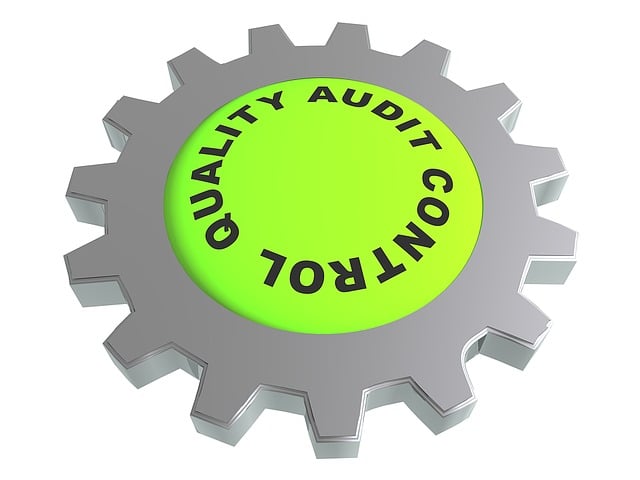The VIN Inspection is a critical component of the DMV vehicle verification process, ensuring that a vehicle's VIN aligns with its registration documents for accurate tracking and to combat fraud. When registering or transferring a car to the local DMV, a VIN number verification is mandatory. This involves a detailed check of the vehicle's details—make, model, year, and title status—against official records. The DMV provides VIN inspection services at both its offices and certified inspection stations across the state. To facilitate this process, individuals must present their vehicle, along with all relevant documents such as the car's title, a completed application form, government-issued ID, and proof of insurance. The physical VIN must be legible and match the one on the registration and title documents. While fees for the DMV VIN verification process vary by location, it remains an affordable step to confirm the vehicle's authenticity. For a smooth experience, it's advisable to prepare all necessary documents in advance, understand the requirements, and adhere to the instructions provided by DMV staff. This ensures accurate vehicle registration records and compliance with state regulations, making the VIN number verification process a straightforward and efficient aspect of vehicle ownership.
When it comes to registering a vehicle with the Department of Motor Vehicles (DMV), understanding the DMV vehicle verification process involving VIN number verification is key. This article demystifies the steps and requirements for a seamless VIN Inspection, ensuring your vehicle’s information aligns with DMV records. Whether you’re new to the state or simply updating your registration, knowing where to go for a DMV VIN inspection and what documents you need can save you time and reduce stress. We’ll guide you through the necessity of VIN Inspection, detail the required documents and steps for verification, help you locate DMV VIN inspection stations, and walk you through the VIN verification process. Additionally, we’ll outline the DMV registration inspection requirements and associated costs to ensure your experience is as smooth as possible.
- Understanding the Necessity of VIN Inspection for DMV Vehicle Verification
- Preparing for Your VIN Number Verification: Required Documents and Steps
- Locating DMV VIN Inspection Stations: A Comprehensive Guide to DMV VIN Inspection Locations
- The Step-by-Step VIN Verification Process at the DMV
- Navigating DMV Registration Inspection Requirements and Costs for a Smooth Experience
Understanding the Necessity of VIN Inspection for DMV Vehicle Verification
The VIN Inspection is a critical component of the DMV vehicle verification process, serving as the vehicle’s unique identifier. This inspection ensures that the VIN number provided matches the one affixed to the vehicle, which is essential for accurate registration and to prevent fraudulent activities. When you register a new car or transfer an out-of-state vehicle to your state’s DMV, the VIN number verification is mandatory. It confirms the vehicle’s specifications, including its make, model, year, and title status, against official records. This step is integral to maintaining the integrity of vehicle ownership records and aligning them with the actual vehicle in question.
To navigate this process efficiently, it’s important to be aware of the DMV VIN inspection locations. These can typically be found at local DMV offices or authorized inspection stations. The DMV VIN check requirements are straightforward: you need your vehicle, a clear view of its VIN, and any necessary documentation for registration transfer or new vehicle registration. The cost for the VIN verification process may vary depending on your location, but it is generally a nominal fee that ensures the authenticity of your vehicle’s information. By understanding these steps and having all required documents prepared beforehand, you can streamline the DMV vehicle verification experience, making it less of a chore and more of a routine task.
Preparing for Your VIN Number Verification: Required Documents and Steps
When preparing for your VIN number verification at the DMV, it’s crucial to gather all necessary documents and understand the steps involved in the process. To initiate the DMV vehicle verification, you must possess a valid vehicle title and a completed application form specific to your state. Additionally, be ready with a government-issued ID and proof of insurance, as these are commonly required. The VIN inspection, an integral part of the DMV VIN check requirements, involves a visual examination of your vehicle’s VIN to ensure it matches the one on your registration documents and title. This step is vital for accurate record-keeping and fraud prevention within the state’s motor vehicle database.
To undergo the VIN verification process, locate the nearest DMV VIN inspection site. These locations are equipped with trained personnel ready to perform a thorough check of your vehicle’s VIN. The DMV VIN inspection can be conducted either at a DMV office or sometimes by a certified inspector at an alternative location. Ensure you have all documents in order before arriving, as this will expedite the process. During the VIN verification process, the inspector will record your vehicle’s VIN and cross-reference it with the information provided on your registration forms. This comparison is essential for maintaining accurate records, which not only aids in law enforcement efforts but also ensures that your vehicle registration is valid and up to date. Remember to follow all instructions given by the DMV staff to complete your VIN number verification smoothly and efficiently.
Locating DMV VIN Inspection Stations: A Comprehensive Guide to DMV VIN Inspection Locations
When navigating the DMV vehicle verification process, locating an authorized VIN Inspection station is a critical first step. The VIN number verification is a cornerstone of the registration process, ensuring that your vehicle’s identification number matches its official records to prevent fraud and maintain accurate ownership documentation. To facilitate this, the DMV maintains a network of certified VIN inspection locations across various regions. These stations are staffed by trained professionals who can perform the VIN verification process with precision. Utilizing an online portal provided by the DMV, you can easily identify nearby VIN inspection sites. The DMV’s user-friendly interface allows users to search by location or zip code, making it convenient for vehicle owners to find a station that fits their needs. Additionally, the DMV VIN check requirements are standardized to ensure consistency and reliability across all stations. This means that regardless of where you are in the state, the process for VIN number verification will be the same. It’s important to prepare all necessary documentation before heading to the inspection station to streamline your experience. Typically, this includes the vehicle title, proof of insurance, and any other paperwork required by your state’s DMV for registration purposes. By understanding where to go and what to bring, you can make the DMV VIN inspection process as seamless as possible.
The Step-by-Step VIN Verification Process at the DMV
When navigating the DMV vehicle verification process, understanding the step-by-step VIN inspection is key to ensuring a smooth and efficient experience. The first step involves gathering all necessary documentation for your vehicle, including proof of ownership, such as a title or bill of sale, and ensuring your driver’s license is current and valid. Once you have your documents in order, locate the nearest DMV VIN inspection site. These sites specialize in the DMV VIN check requirements and are equipped to perform the VIN number verification process accurately.
Upon arrival at a DMV VIN inspection location, you’ll be directed to present your vehicle for examination. The DMV employee will record your VIN number, which is typically found on the dashboard or frame of the car, and cross-reference it with the information provided in your registration documents. This verification process ensures that the vehicle’s official identification aligns with your registration, which is crucial for legal compliance and fraud prevention. The DMV VIN inspection is a critical step in the registration process, as it confirms the authenticity of the vehicle and its owner. If all details match and are found to be accurate, the DMV will proceed with issuing registration documents under your name. It’s advisable to familiarize yourself with the specific DMV VIN check requirements for your state before visiting a DMV VIN inspection location to ensure that your visit is productive and that any potential issues can be resolved promptly.
Navigating DMV Registration Inspection Requirements and Costs for a Smooth Experience
When it comes to registering a vehicle with the DMV, understanding the VIN inspection requirements and associated costs is key to a smooth experience. The VIN number verification process is a critical component of vehicle registration and ownership transfer procedures. It ensures that each vehicle’s identification number matches its official records, preventing fraudulent activities and maintaining accurate vehicle registrations. To begin the DMV VIN inspection process, locate your nearest DMV VIN inspection site. These locations are staffed with authorized inspectors who will perform a thorough examination of your vehicle’s VIN to validate its authenticity against the title and registration documents you provide.
Preparing for the DMV vehicle verification involves gathering necessary documents and familiarizing yourself with the DMV VIN check requirements. Typically, you will need your vehicle’s title, proof of insurance, a valid driver’s license, and any lienholder information if applicable. Ensure that these documents are up-to-date and readily available to avoid any delays during the inspection. The costs associated with a DMV VIN inspection can vary by state, so it’s advisable to check your local DMV’s fee schedule beforehand. Some states may offer free inspections, while others charge a nominal fee. By understanding these requirements and preparing accordingly, you can navigate the DMV registration inspection process with greater ease, ensuring that your vehicle is registered promptly and in compliance with state laws.
Navigating the DMV’s VIN verification process is a critical step for both new and existing vehicle owners. By understanding the necessity of a VIN Inspection for DMV vehicle verification and being well-prepared with the required documents and steps, individuals can streamline their experience. With the guidance on locating authorized DMV VIN inspection stations and a clear outline of the VIN verification process, vehicle owners are equipped to fulfill this requirement with ease. The article has provided comprehensive information on DMV VIN inspection locations, DMV VIN check requirements, and associated costs, ensuring that your registration process is smooth and compliant. Remember to follow these guidelines closely for a hassle-free DMV experience.



